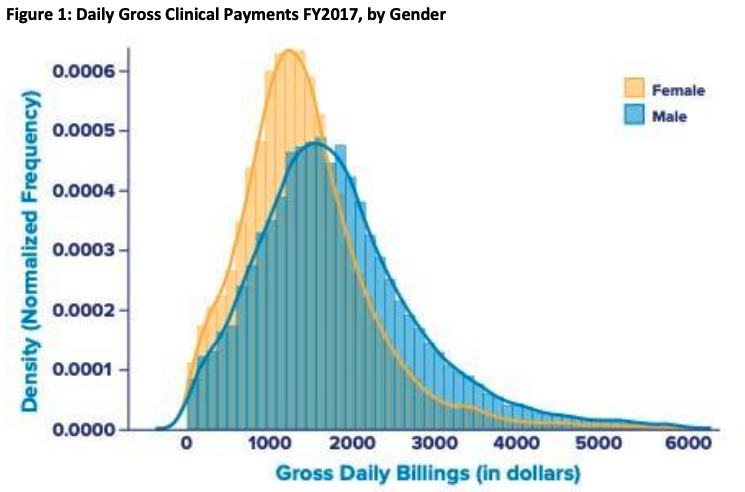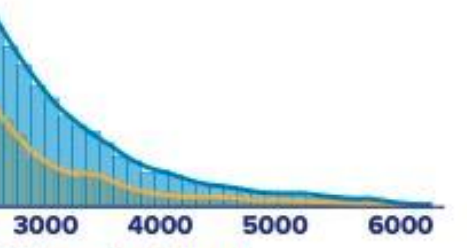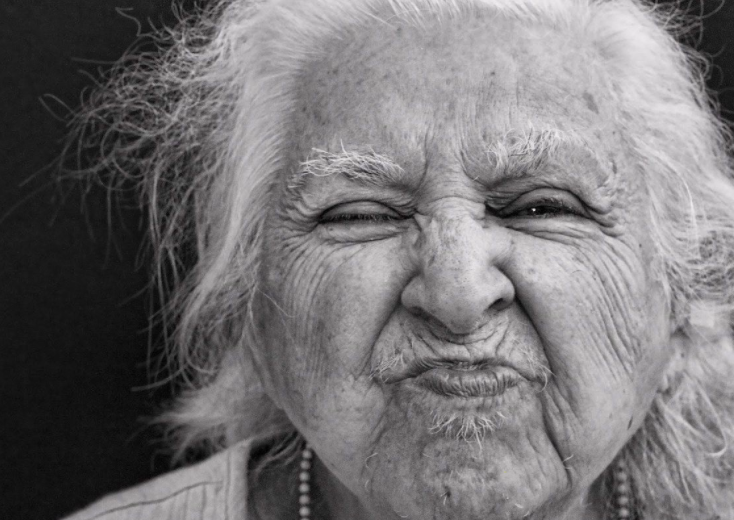Women earn less than men.
The latest OMA study adds to studies that suggest the same thing. But the OMA data might also offer clues for how to fix the gender pay gap.
Can we find a solution before it festers and consumes the profession?
Gender Pay Gap

Some use this graph as forensic accounting. This mindset focusses on ways to assign blame and mete out punishment. It adds another gloomy finding to fuel burnout and depression.
Ample scope exists for debate about causes. This post is not about that. Instead, is there a way to focus on solutions that unify the profession? Does the data suggest a way to improve the gender pay gap?
Successful Women
If we look at the tails of the curves, it looks like both women and men make it to the top, or very close to it.
 This points to two lines of investigation.
This points to two lines of investigation.
First, the graph suggests the absence of a structural barrier. The tails do not seem to end 16% apart.
Of course, maybe those women who land on the tail of the curve have to work 16% harder to get there. Maybe they have found a way to work 16% more hours to earn the same as men who work less? This should not be too hard to find out.
But more important, this tail points to a fascinating area of study.
Some women generate enormous income, over three times higher than average for all doctors.
What makes these uber-successful women so productive? Could these high-earning women teach the rest of us? Continue reading “Gender Pay Gap: A Way to Fix It?”


